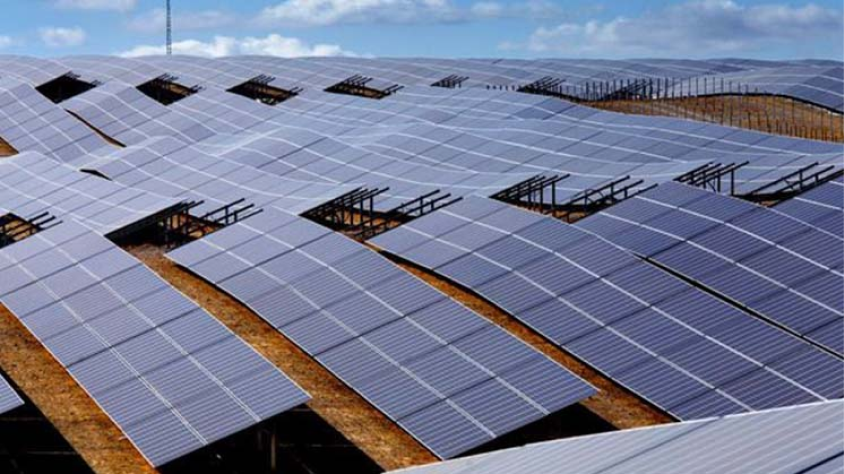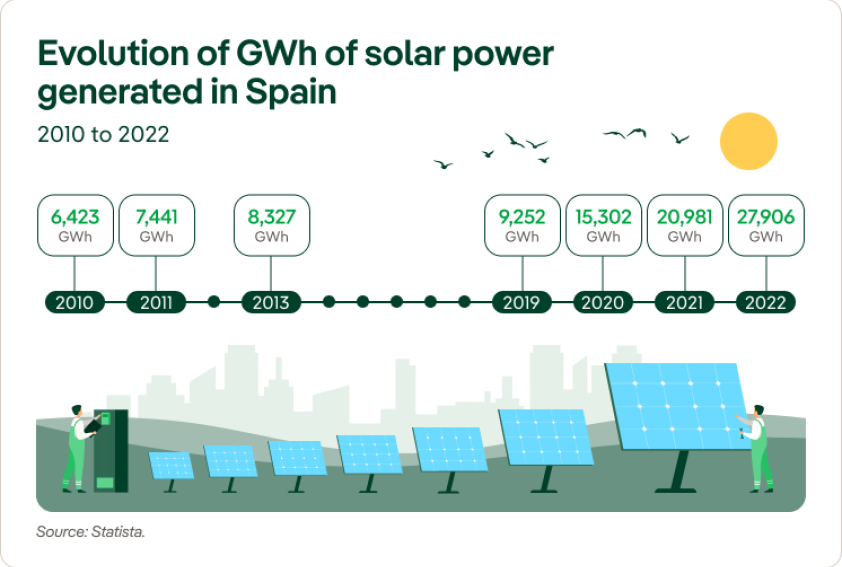HISTORY OF SOLAR ENERGY IN SPAIN
The evolution and scope of photovoltaic solar energy in Spain
Spain is one of the European countries with the most solar exposure, which makes it an ideal place to develop photovoltaic solar energy. Its geography and climate has made the country a pioneer in the use of this energy source worldwide.

Núñez de Balboa photovoltaic plant, one of the largest in Europe, located in Badajoz.
What was the first grid-connected photovoltaic plant in Spain?
In 1984, Iberdrola España marked the beginning of photovoltaics in Spain by commissioning the first grid-connected power plant in San Agustín de Guadalix with a capacity of 100 kilowatts. Initially, several different types of solar panels were used: monocrystalline silicon, bifacial (Spanish patent), polycrystalline silicon and amorphous silicon.
This photovoltaic project, classified as experimental, involved an investment of 462 million pesetas at the time, equivalent to approximately €250,000. Although advanced solar thermoelectric conversion projects had been carried out in Spain before, photovoltaic conversion had only been used in small installations until the San Agustín de Guadalix plant was built, which remained the only plant on the peninsula for almost a decade.
What does grid-connected photovoltaic mean?
Grid-connected photovoltaic refers to systems for generating electricity from photovoltaic solar panels that are directly connected to the conventional electricity system. This type of system uses PV solar panels to convert solar radiation into direct current (DC) electricity. An inverter then converts this direct current into alternating current (AC), which is compatible with the grid.
The main characteristic of a PV grid-connected system is that it can supply electricity to meet both the energy needs of the consumer or site where it is installed and the electricity grid. When solar generation exceeds the electricity demand of your household's consumption, the excess power is fed into the grid. Conversely, if solar generation is insufficient to meet household demand, electricity can be supplied from the grid to make up the difference.
This configuration allows for greater flexibility in electricity supply and can help cut back on electricity bills and generate clean and renewable energy.
Installed photovoltaic solar capacity in Spain
Photovoltaic solar energy continues to be the fastest growing technology in Spain. Although only 6,500 gigawatt hours of solar energy were generated in 2010, its growth spiked in 2020, with 15,302 GWh, and has continued to increase progressively until in 2022 it became the technology that increased its installed capacity the most, both nationally and in Europe.

According to data shared by Red Eléctrica, photovoltaic solar is currently 16% of installed capacity in Spain. Regionally, Extremadura was the leader in photovoltaic solar capacity in 2022, with 27% of national capacity, followed by Andalusia and Castilla-La Mancha, with more than 20% each. These three regions accounted for almost 70% of Spain's installed PV capacity at that time.
Our PV plants in Spain
In recent decades, PV solar has emerged as a key solution in the transition to more sustainable and renewable energy sources, with multiple advantages.
Iberdrola España contributes to the development and promotion of solar energy in the country with its over 40 photovoltaic plants. All of them have more than 5,000 MW of installed capacity. Find out more about our most outstanding photovoltaic projects.








